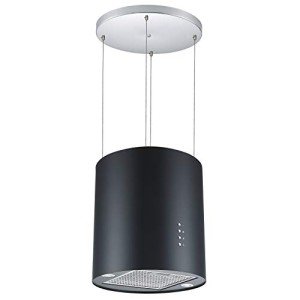How Much Can Island Vent Hood Experts Make?

How to Aerate an Island Vent Hood
Suspended from the ceiling, an island vent hood assists circulate air and keeps your kitchen free of smoke and odors. It's also a trendy feature that enhances your cooking area.

Ventilation types include external venting, which pushes air through ductwork to the outside of your home, and recirculating models that filter and recycle cooking fumes. Some hoods can even be converted in between one and the other.
Ventilation
Unlike wall-mounted range hoods that vent air vertically through the wall to the outdoors, island vent hoods use ductwork that goes through the ceiling to tire the cooking location to the outdoors. The difference is that they can also be utilized to recirculate air.
Discover our selection of industrial and designer custom-made hoods with powerful ventilation systems. With adjustable specs, discover the ideal hood for your kitchen space.
Dacor's ConnectOn auto-responsive innovation switches on the hood and increases the fan speed in response to the cooktop, providing powerful efficiency while using very little noise. It's just another manner in which you can prepare with self-confidence. Add a touch of contemporary with this stainless steel pyramid-style wall-mount canopy hood. This hood gracefully accents advanced kitchen areas that follow a more traditional design style and clarifies of smoke, steam and cooking odors.
Design
Unlike wall-mounted range hoods that are installed versus the wall, island vent hoods are suspended from the ceiling over an island or peninsula cooktop or range. They also utilize ductwork to tire air out of the home. This design is best for cooking areas that have a lot of open space, and it helps to add visual interest to your room. This new home functions Blackberry stained cherry cabinets on the parameter, and a natural stacked stone on the island and vent hood to match the Gunstock stain on the cabinets. 10ft ceilings and a skylight aid to keep the kitchen intense and large.
Sound
While an island vent hood does a terrific job of filtering smoke, grease and smells out of your kitchen, it can also develop some sound that disrupts the harmony of your cooking space. Luckily, there are some techniques you can use to lower this noise and enable you to prepare in peace.
One of the main reasons for excess range hood noise is triggered by fan motor issues such as stiff bearings or improperly lubricated fans that produce a loud humming sound. Ductwork can likewise contribute to this problem especially if the ducts are too little or if they are obstructed with dust.
The finest way to reduce sound is to guarantee that your vent hood has the greatest airflow rating that you can pay for. The Home Ventilating Institute (HVI) advises an air flow rate of 100 to 250 cfm for wall-mounted hoods over 30-inch broad ranges. This hood should also have a multispeed fan to permit lower fan speeds throughout light cooking. One of the simplest methods to lower the sound is to ensure that the ducting is smooth-walled, as corrugated duct restricts airflow. You must also keep the duct runs as short and straight as possible to prevent any kinking.
Setup
Ventilation of island range hoods is a various procedure than wall-mounted units, since they are suspended from the ceiling over an island or peninsula cooktop or stove. They normally require a duct that goes through the ceiling and out through the roof, which can be a complex project for an unexperienced property owner.
In addition, they must be installed at least 24-inches to 36-inches above the cooking surface area. The height might differ, depending upon the size of the hood and the ceiling. If you have existing ducting and electrical wiring in the kitchen ceiling, this kind of vent hood is relatively simple to set up. If not, it's recommended that you speak with a professional.
To begin setup, make sure the hood can fit through the opening you have actually selected for the vent and that it's the best width to accommodate the ductwork and exhaust. If island cooker extractor hood is too large, it can lessen the efficiency of the vent and will increase noise levels. Next, cut a little hole in the ceiling and use a wire cutter to examine that there's no plumbing or electrical circuitry near the hole. If there is, think about hiring an expert for the task or changing to a recirculating system.
If there isn't, you can start the bigger vent hole by drilling locator holes with a drill and a 1/2-inch masonry bit in each corner of the location. Then use a jigsaw to cut the larger vent hole. Lastly, include a drywall spot and paint to end up the task. As soon as the hood remains in location, you can run the electrical circuitry and connect it to your breaker box. Follow your manufacturer's directions for complete setup details.
